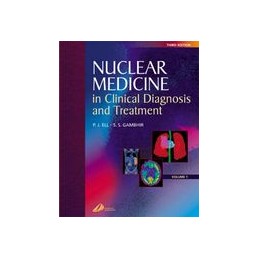Description
This definitive and comprehensive 2 volume text-reference book is essential reading for those who are primarily involved in the practice of nuclear medicine. Over 180 contributors, all of them internationally recognized authorities, focus on current and newly available radionuclide techniques and directly apply them to clinical practice. Covering all of the major body systems and organs in which nuclear medicine procedures are used, the book takes a disease oriented approach and this new edition features the latest advances in diagnostic and therapeutic modalities used in the detection and treatment of cancer, heart disease, neurologic disorders, trauma and other common and less common diseases. There are major revisions/ new chapters in the areas of brain imaging, movement disorders, stroke, lymphoma therapy, bone density, non-neurologic drug discovery, molecular imaging, cost/benefit analysis.
Product Details
Reference
34604
EAN13
9780443073120
ISBN
9780443073120
Data sheet
Publication date
2004
Issue number
3
Cover
hard cover
Pages count
1950
Weight (g)
7540
Section 1: Nuclear medicine in tumor diagnosis and therapy Part A: Diagnosis Section 1: Nuclear medicine in tumor diagnosis and therapy Part B: Radionuclide therapy Section 2: Nuclear medicine in disorders of bones and joints Section 3: Quantitative studies of gastrointestinal function Section 4: Nuclear medicine in acute care Section 5: Nuclear cardiology Section 6: Nuclear medicine in neurological and psychiatric diagnosis Section 7: Nuclear medicine in renal disorders Sction 8: Basic sciences




 Delivery policy
Delivery policy
 Security policy
Security policy
 Return policy
Return policy
